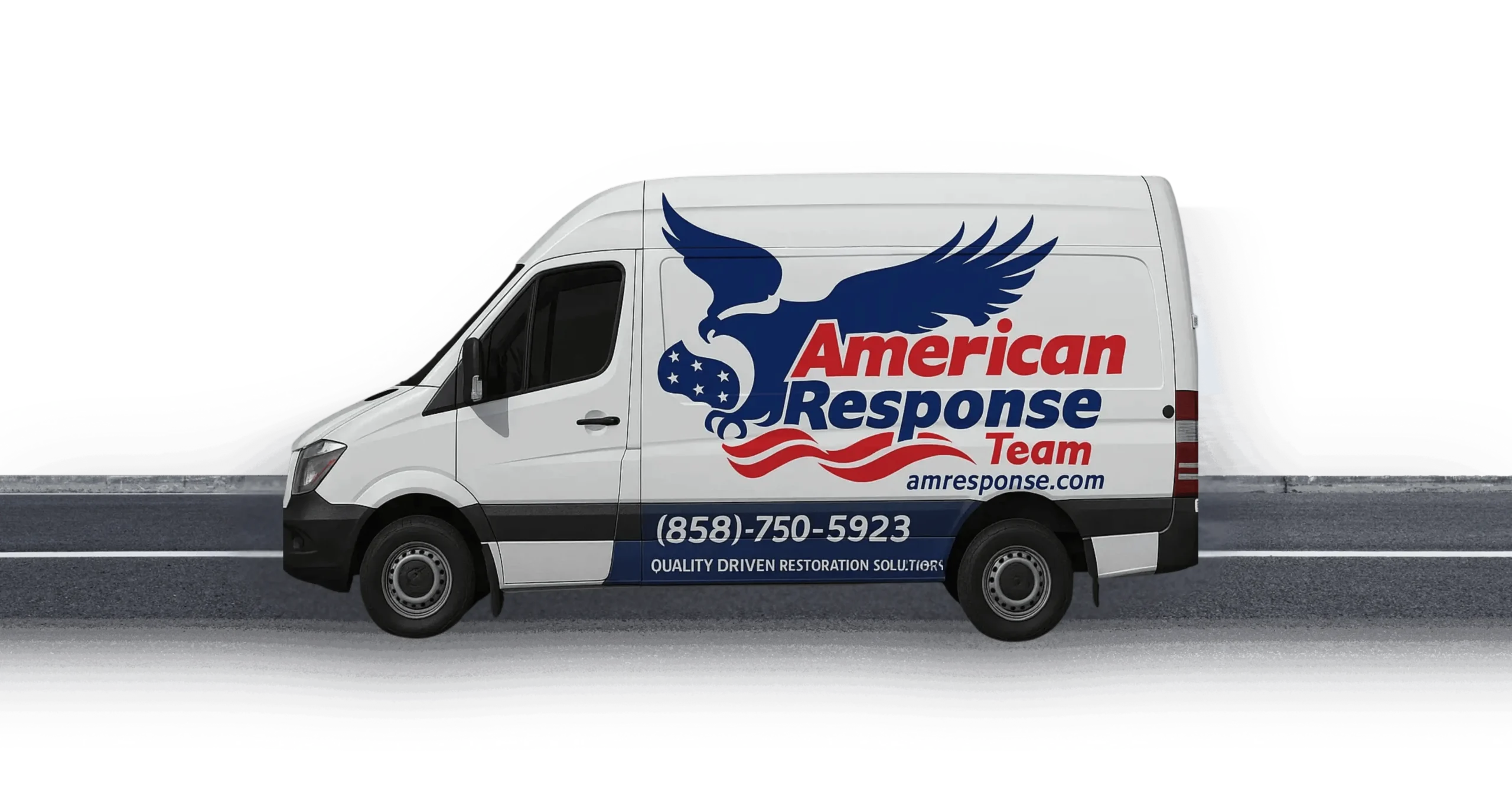When a fire strikes your home, the flames are just the beginning of your problems. Learning how to get rid of smoke smell after fire becomes your next big challenge. Smoke particles are tiny and stick to everything they touch. They hide in your walls, carpets, clothes, and even inside your air vents. The good news? You can beat this problem with the right steps and tools.
Smoke smell doesn’t just disappear on its own. Those tiny particles keep releasing bad odors for months or even years if you don’t handle them properly. That’s why knowing how to get rid of smoke smell after fire is so important for your family’s health and comfort.
Why Smoke Smell Sticks Around After Fires
Understanding why smoke smell lingers helps you fight it better. When things burn, they create tiny particles called volatile organic compounds (VOCs). These particles are so small you can’t see them, but they stick to everything. According to the CDC, these particles can cause health problems like breathing trouble and eye irritation.
The particles don’t just sit on surfaces. They soak deep into porous materials like wood, fabric, and drywall. That’s why you might still smell smoke weeks after cleaning your home. Learning how to get rid of smoke smell after fire means tackling these hidden particles everywhere they hide.
Step 1: Start With Safety and Ventilation
Before you begin removing smoke smell, make sure your home is safe to enter. Check with your local fire department first. Once you get the all-clear, your first job is getting fresh air moving through your house.
Open every window and door you can. Set up fans to push smoky air out and pull fresh air in. This simple step starts the process of how to get rid of smoke smell after fire. The EPA recommends creating positive air pressure by pointing fans outward from your home.
Turn off your heating and cooling system right away. Smoke particles can get stuck in your air ducts and spread the smell throughout your home every time the system runs. Professional fire damage restoration experts always start with this step.
Step 2: Remove Damaged Items Completely
Some items absorb so much smoke that cleaning them isn’t worth it. Knowing what to throw away is a key part of how to get rid of smoke smell after fire. Items that usually need to go include:
Heavily damaged carpets and padding soak up smoke like sponges. The padding underneath is especially hard to clean and often needs complete replacement. Burned or heavily smoke-damaged furniture might look okay, but the smell can stay forever.
Food and medicine exposed to smoke should always be thrown away. Colorado Department of Public Health warns that smoke can contaminate these items in ways you can’t see or smell.
Cosmetics, toiletries, and anything with a porous surface that absorbed smoke should also go. It might seem wasteful, but keeping these items means the smoke smell will keep coming back.
Step 3: Deep Clean All Surfaces
After removing damaged items, it’s time for serious cleaning. How to get rid of smoke smell after fire requires cleaning surfaces you might never think about. Start with the obvious ones like walls, ceilings, and floors, then move to the hidden spots.
Use a strong cleaner made for smoke damage. Mix warm water with a degreasing dish soap or buy a commercial smoke cleaning product. Clean from top to bottom, starting with ceilings and working your way down to floors.
Don’t forget about light fixtures, ceiling fans, and air vents. Smoke particles love to hide in these spots. Inside cabinets and drawers need attention too. Even the backs of picture frames and the tops of door frames collect smoke particles.
Wash every piece of clothing, bedding, and fabric item that can go in the washing machine. Add a cup of white vinegar to the wash cycle. For items that can’t be washed, professional dry cleaning might help, but some fabrics might be too damaged to save.
Special Attention for HVAC Systems
Your heating and cooling system can spread smoke smell throughout your entire home if you don’t clean it properly. Change all air filters immediately and keep changing them monthly until the smell is gone. Use high-quality filters with a MERV rating of 11 or 12.
Professional duct cleaning is often necessary. Smoke particles can travel through your entire duct system and settle everywhere. This is one area where calling professional restoration experts makes sense, especially for complex systems.
Step 4: Use Air Purifiers and Filters
Air purifiers can help, but you need the right kind. Look for units with both HEPA filters and activated carbon filters. HEPA filters catch tiny particles, while carbon filters absorb odor molecules. This combination is essential for how to get rid of smoke smell after fire.
Place air purifiers in the rooms where the smoke smell is strongest. Run them continuously for several weeks or months. Remember that air purifiers help, but they can’t replace proper cleaning and removal of damaged materials.
Step 5: Address Hidden Areas
Smoke smell often hides in places you can’t see. Insulation in your walls and attic can hold smoke odors for years. If the smoke damage was severe, you might need to remove and replace insulation in affected areas.
Check behind baseboards and trim. Smoke can get into the smallest cracks and stay there. Sometimes you need to remove trim pieces to clean behind them properly.
Crawl spaces and basements are other hiding spots. Even if the fire didn’t reach these areas, smoke can travel through air vents and floor gaps. Don’t skip these areas when figuring out how to get rid of smoke smell after fire.
Step 6: Professional Ozone and Hydroxyl Treatments
Sometimes regular cleaning isn’t enough. Professional restoration companies use special machines that create ozone or hydroxyl radicals. These molecules break down odor particles at a chemical level.
Ozone treatment is powerful but dangerous. You and your pets must leave your home during treatment. Only trained professionals should handle ozone generators because they can cause health problems if used wrong.
Hydroxyl treatment is safer and doesn’t require you to leave your home. However, it takes longer to work than ozone treatment. Professional fire damage restoration specialists can help you decide which option works best for your situation.
Step 7: Seal and Paint Affected Surfaces
After deep cleaning, some surfaces might still release smoke odors. This is where sealing comes in. Special primer paints can lock in odors and prevent them from escaping into your air.
Use an odor-blocking primer before painting walls and ceilings. Regular paint isn’t enough. You need a primer specifically designed to seal in smoke odors. Apply the primer according to the manufacturer’s directions, then finish with regular paint.
This step is crucial for how to get rid of smoke smell after fire in rooms with heavy smoke damage. Wood surfaces like cabinets and trim might also need sealing products designed for wood.
When DIY Methods Aren’t Enough
Sometimes, despite your best efforts, the smoke smell comes back. This often happens when smoke particles have penetrated too deeply into materials or when the fire damage was more extensive than it appeared.
Professional restoration companies have access to industrial-grade equipment and specialized chemicals that aren’t available to homeowners. They also have the training to identify hidden sources of smoke odor that you might miss.
If you’ve tried these steps and still can’t get rid of the smoke smell, it’s time to call professionals. Dealing with insurance after a house fire can also be complicated, and professional restoration companies often help with insurance claims.
Prevention Tips for Future Fires
While learning how to get rid of smoke smell after fire is important, preventing fires is even better. Install smoke detectors in every room and check the batteries twice a year. Keep fire extinguishers in your kitchen and garage.
Create a fire escape plan with your family and practice it regularly. Fire season preparation is especially important in areas prone to wildfires.
Regular maintenance of electrical systems, heating equipment, and chimneys can prevent many house fires. Don’t forget about outdoor fire safety, especially during dry seasons.
Health Concerns From Lingering Smoke Smell
Breathing smoke particles isn’t just unpleasant – it can be dangerous. Long-term exposure to smoke residue can cause breathing problems, headaches, and other health issues. Children, elderly people, and those with existing health conditions are especially at risk.
That’s why knowing how to get rid of smoke smell after fire isn’t just about comfort. It’s about protecting your family’s health. If family members develop persistent cough, eye irritation, or breathing problems, see a doctor and mention the smoke exposure.
Working With Insurance Companies
Most homeowner’s insurance policies cover smoke damage restoration. Document everything with photos before you start cleaning. Keep receipts for all cleaning supplies and equipment you buy.
Professional restoration companies often work directly with insurance companies. They know how to document damage properly and can help ensure you get the coverage you deserve. Having a checklist ready can help you handle the insurance process more smoothly.
Why Professional Help Makes Sense
While you can handle some smoke cleanup yourself, professional restoration companies bring expertise and equipment that most homeowners don’t have. They understand how to get rid of smoke smell after fire completely, not just temporarily.
Professionals can identify damage you might miss and have access to specialized cleaning products and equipment. They also carry insurance and warranties on their work, giving you peace of mind.
Most importantly, they can complete the job faster than DIY methods, getting your family back to normal life sooner. When you consider the time, effort, and cost of doing it yourself, professional help often makes financial sense too.
Conclusion
Learning how to get rid of smoke smell after fire takes patience, hard work, and often professional help. The key is acting quickly and being thorough. Don’t skip steps or try to rush the process.
Start with ventilation and removal of damaged items. Clean every surface thoroughly, paying special attention to hidden areas. Use air purifiers and consider professional treatments for stubborn odors. Finally, seal affected surfaces to prevent odors from returning.
Remember that severe smoke damage often requires professional restoration services. If you’re dealing with fire and smoke damage in San Diego County, don’t hesitate to get expert help. The sooner you address smoke odors properly, the sooner your home will feel like home again.
Your family’s health and safety are worth the investment in proper smoke odor removal. Take the time to do it right, and you’ll have a clean, healthy home for years to come.

